Companion planting offers numerous benefits to the home gardener, whether practiced in the vegetable garden, herb garden, or even flower beds. If you are just starting this practice, the numerous possible plant combinations can seem overwhelming. This companion planting guide breaks down the essential details about companion planting and includes a list of individual companion plant guides so you can absorb the information one bite at a time.
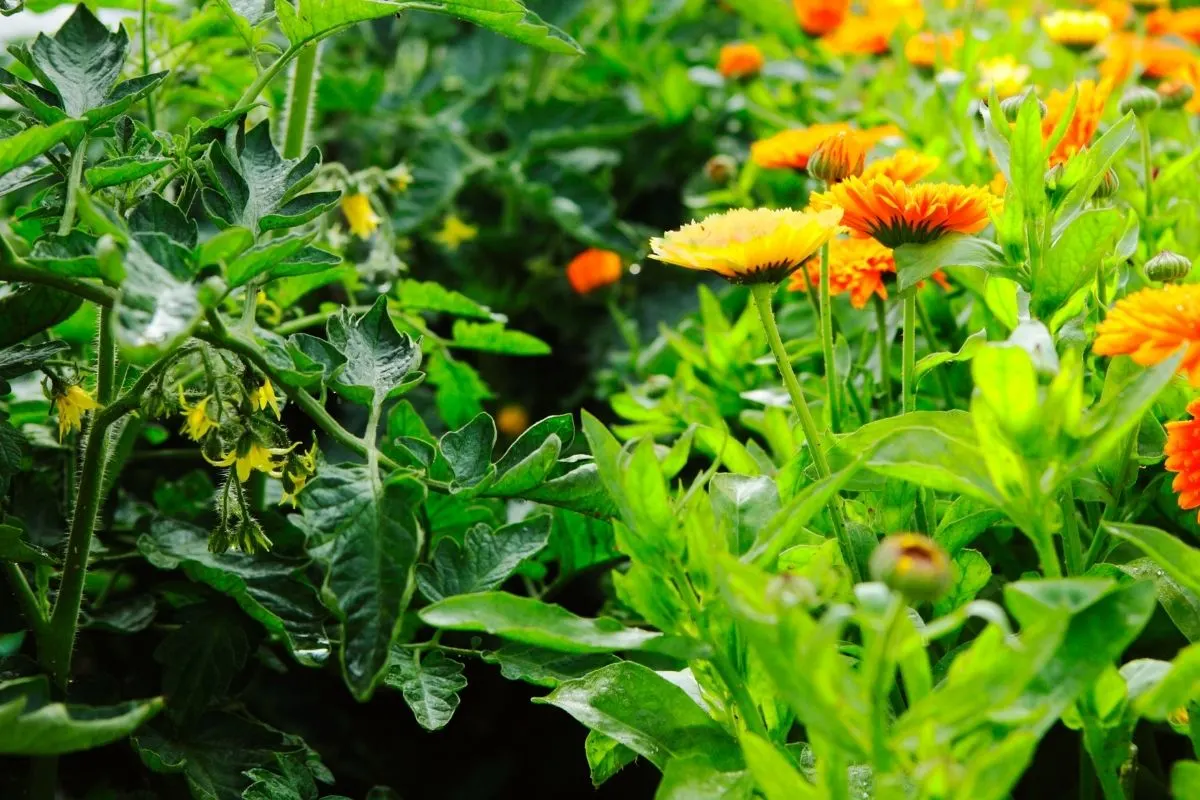
What Is Companion Planting?
Companion planting involves growing multiple plant species together for cultural benefit. Sometimes, this relationship goes only one way; other times, it is mutual. Although plants compete with each other for resources, many have adapted to grow alongside and even work with other plants.
The science behind companion planting backs up the idea that a diverse garden is a healthy garden. And when you know which plants grow best together, you can maximize the benefits companion planting provides.
Benefits of companion planting
1. Maximized use of space
Plants have different spacing requirements and maturation rates, allowing you to pack more plants into less space. For example, you might plant a low-growing, fast-maturing vegetable under a taller, slower-growing plant and get two crops out of the same area from which you only would have gotten one.
2. Symbiotic nitrogen fixation
Some plants – namely legumes – fix nitrogen in the soil, while other plants require lots of nitrogen in order to grow. Many gardeners use legumes, like clover, as a cover crop, but you can also plant legumes and heavy nitrogen feeders right next to each other, like beans and potatoes.
3. Weed suppression
Vines and leafy plants can help shade the soil and suppress weeds for plants that have less dense foliage. This means less resource competition for your plants and less weeding for you.
4. Pest reduction
Some plants deter pests of other plants, making them an effective biological repellent. Others simply mask the scent of other plants, making them difficult for pests to find.
5. Shade
Tall plants can provide shade for those that need protection from too much sun and heat. By taking advantage of this benefit, you might even be able to extend the growing season of cool-weather crops.
6. Moisture retention
While taller plants shade shorter plants, those shorter plants shade the soil, preventing water evaporation and cooling the soil on hot, sunny days. These leafy, low-growing plants effectively act as a “living mulch.”
7. Beneficial habitat
While some plants repel pests, others attract beneficial insects that pollinate crops and feed on insect pests. Thus, planting these flowers can encourage increased fruit production (through pollination) and decrease pest populations (through predation).
Tips for Growing Fruits, Vegetables, and Herbs Together
What vegetables should not be planted next to each other?
When practicing companion planting, it is important to know which plants grow well together and which do not. Some plants can actually hinder the growth of certain other plants and thus should be located in another part of the garden. Additionally, plants that compete for the same resources and those that share pests and diseases should generally not be planted next to each other.
The guides linked to at the end of this article detail poor companions for specific plants, but here are a few examples of vegetable combinations to avoid:
- beans and alliums
- brassicas and tomatoes
- carrots and fennel
- cucumbers and potatoes
- watermelon and mustard
What vegetables and flowers grow well together?
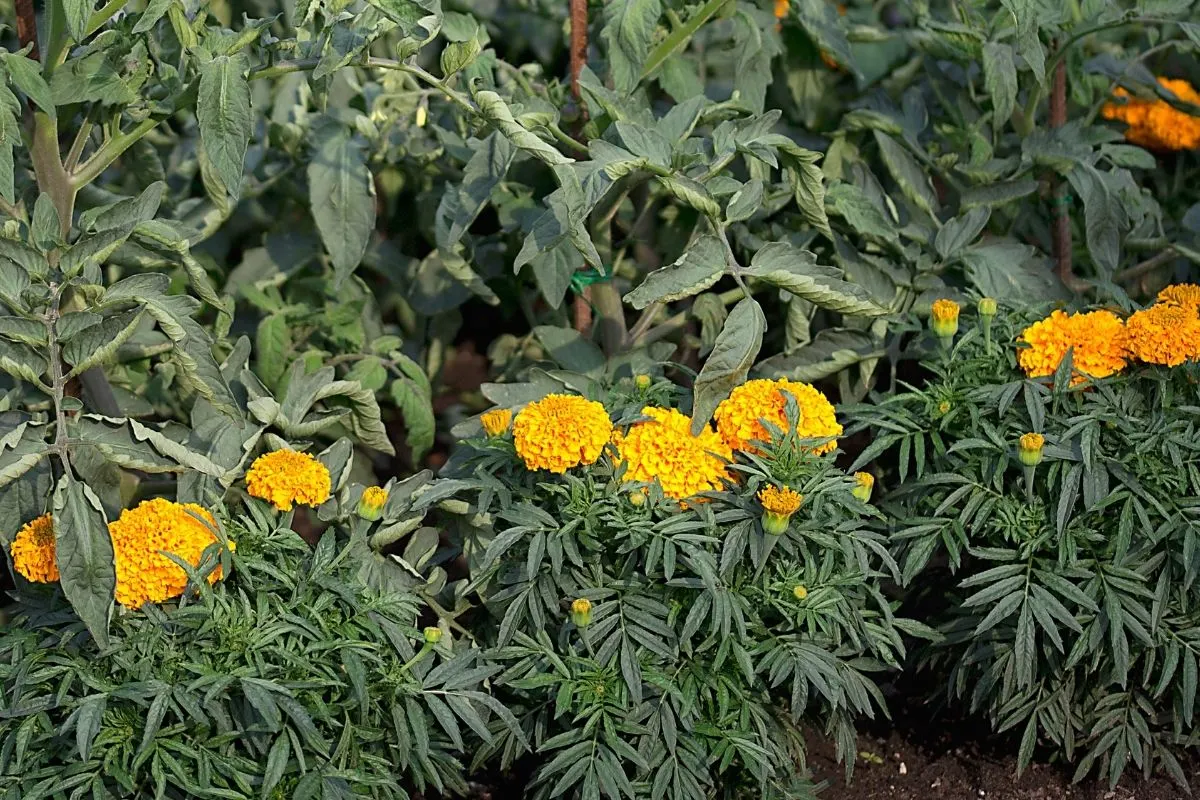
Many vegetables, herbs, fruits, and flowers grow well together, as detailed in the individual guides linked to in the list at the end of this article. You have likely heard of the traditional “Three Sisters” garden, in which corn, pole beans, and squash grow together. The corn serves as a support for the pole beans, which fix nitrogen in the soil, and the squash acts as a living mulch.
Flowers often provide many benefits in the vegetable garden. Here are a few winning combinations of flowers and vegetables:
- marigolds and beans
- borage and tomatoes
- chamomile and brassicas
- nasturtium and squash
- sunflowers and cucumbers
- amaranth and melons
How close do companion plants need to be?

Instead of planting large groupings of one type of plant, mix companion plants together. For instance, a mass planting of one type of vegetable acts as a beacon for pests, while interplanting beneficial flowers and herbs with that vegetable will mask it and deter pests.
Companion planting often relies on planting two or more types of plants in close proximity. However, flowers that attract beneficial insects do not always need to be right next to the target plants for those plants to receive benefits.
Determining the proper spacing for two different plants grown together can be difficult, as it will really depend on the plants in question. For example, pole beans can be planted right at the base of corn and sunflowers, since they will use the stalks as supports. Nasturtium and squash, on the other hand, will need to be spaced apart so they don’t crowd each other.
In such cases, you can use the average of the spacing requirements of the two plants. If one plant requires, say, 12-inch spacing, and the other 6-inch spacing, leave 9 inches between the two.
Common companion planting mistakes to avoid
Perhaps the biggest companion planting mistake is planting the wrong plants next to each other. Trial and error is an excellent teacher, but the individual companion planting guides below will help you avoid planting incompatible plants together.
Additionally, avoid placing plants that share the same diseases and pests together, which can encourage the spread of those problems. Planting them together for a season might be okay, but definitely don’t follow one with the other the following season. For example, you can grow tomatoes and peppers in the same bed one year, but plant them in another bed the next year.
Also, while intercropping tall and short plants often works advantageously, keep in mind the sunlight requirements of the shorter plants. If they require full sun, the shade from the taller plants might stunt their growth. In fact, it’s a good idea to check the compatibility of the growing requirements of any plants you plan on growing nearby.
Best Companion Plants for Vegetables, Herbs, and Fruit
The following lists link to individual guides on the best companions for different vegetables, herbs, and flowers. Each list is sorted alphabetically to help you find what you’re looking for. These lists are constantly being added to, so keep checking back to see what’s new!
Vegetable companion planting

Companion plants for artichokes
Fixing nitrogen, repelling pests, and attracting beneficial insects, artichokes thrive in loose, fertile, well-drained soil and full sunlight and require frequent watering to maintain moist, but not wet, soil. They are great companions for many plants in the garden: just keep in mind how tall they grow and plant around them accordingly.
Companion plants for arugula
A peppery salad green packed with nutrients, arugula makes an excellent addition to the vegetable garden. Grow companion plants nearby to encourage healthy growth and improve the flavor of fresh salads throughout spring and even into summer.
Companion plants for asparagus
Asparagus, strawberries, rhubarb, and horseradish make up a winning combination for a perennial food garden. Learn how to successfully grow these together and which annual plants you can also include to improve your asparagus harvest.
Companion plants for beans
Although they take a bit of work to pick, beans are among the easiest vegetables to grow, and they produce such rewarding yields. Try interplanting beans with a few companions for even better results!
Companion plants for beets
Nutrient-dense and versatile vegetables, beets are a great crop to grow in the garden, with their leafy greens and juicy roots. Plant the right companions nearby to improve the quality of your beet harvest.
Companion plants for broccoli
Pair broccoli with its friends for a healthy, flavorful crop, while keeping potential competitors of this hungry plant at a distance.
Companion plants for cabbage
Cabbages have many enemies, from pests to heat. Plant them with friends to help them along, and you can enjoy a bountiful, flavorful harvest this season!
Companion plants for carrots
Do carrots really love tomatoes? The answer may be more complicated than you think! Read more in this article and learn which other plants carrots truly love.
Companion plants for cauliflower
Practice intercropping with cauliflower and a few of its companion plants to encourage healthy growth and reduce pest pressure.
Companion plants for celery
Both snackable and great for cooking, celery deserves a spot in the vegetable garden, surrounded by plant friends to help it grow strong and healthy. Learn friend from foe in this helpful guide!
Companion plants for corn
The sweet, juicy burst of corn on the cob is one of the many delights of summer. Choose some of the best companion plants to help your corn grow healthy and strong, so you can be sure to enjoy munching plenty of ears.
Companion plants for cucumbers
Plant some of the best cucumber companions with your vines to help your cool, crisp cucumbers reach their full growth potential. Choose from friendly herbs and flowers as well as vegetables!
Companion plants for eggplant
For buckets of beautiful, purple, oblong fruits, learn which garden plants are friends of eggplants, and which might act more like foes. Good eggplant companions will encourage healthy growth!
Companion plants for garlic
Garlic is incredibly easy to grow and provides wonderful benefits in the vegetable garden. Learn which plants most benefit from growing near garlic (and which ones benefit it the most), as well as the one type of vegetable that doesn’t get along well with garlic.
Companion plants for onions
Onions are wonderfully versatile vegetables in the kitchen as well as in the garden, as companion plants. Learn which vegetables, fruits, and herbs grow well with onions and which to avoid.
Companion plants for peppers
So many plants grow well alongside peppers, we couldn’t fit them all on our list! We did include the four plants to avoid growing with peppers so you know what not to do, as well as 16 of the best companions for peppers to get you started.
Companion plants for squash
Grow companion plants near all of your squash – zucchini, other summer squash, pumpkins, and winter squash – to attract pollinators for fruit formation, deter pests, and encourage healthy growth.
Companion plants for strawberries
Strawberries and rhubarb pair as well in the garden as they do in the kitchen. Find out which other plants provide benefits to strawberry plants – and which ones decidedly do not.
Companion plants for tomatoes
Struggling with ravenous tomato hornworms or pesky whiteflies? Before you reach for insecticides, consider planting herbs. Learn which herbs – and other plants – grow best alongside tomatoes in this handy guide.
Herb companion planting
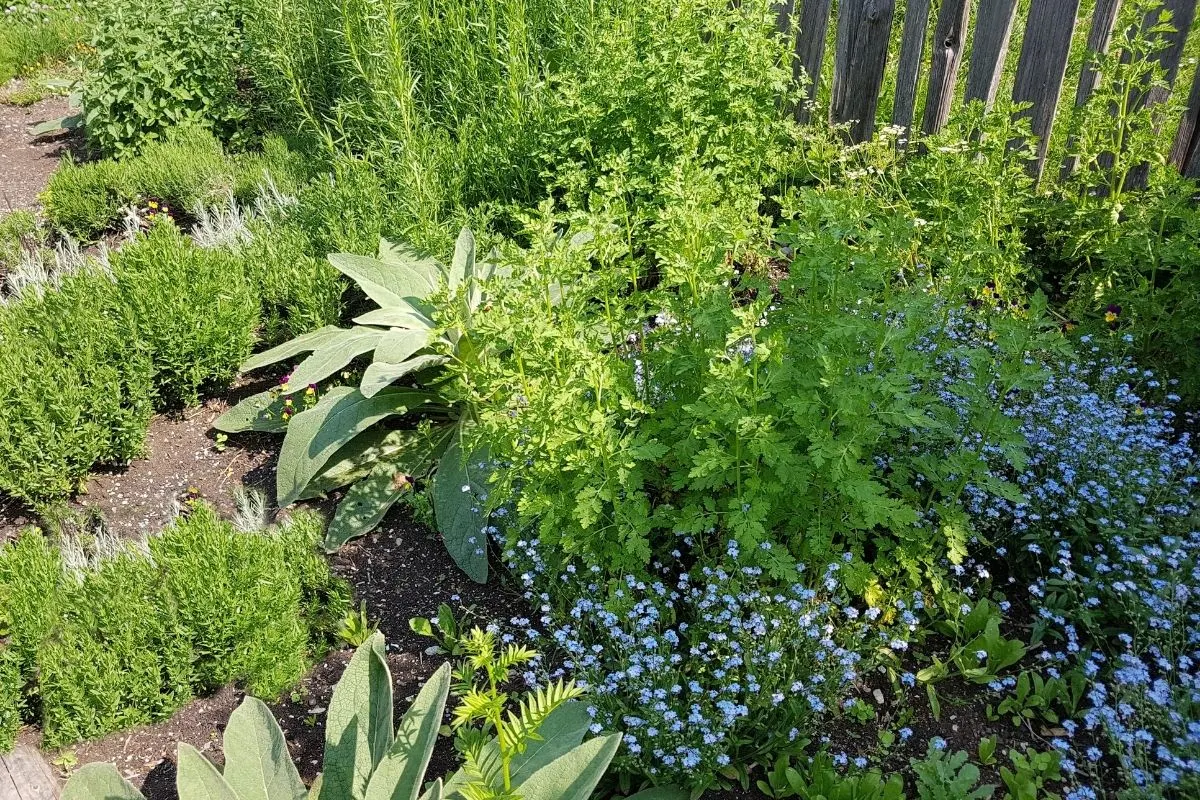
Companion plants for basil
It’s delicious and easy to grow, and it repels many common garden pests, including mosquitos. Yep, I’m talking about basil. Read this helpful guide to learn how to make the most of basil in the garden.
Companion plants for cilantro
Cilantro, or coriander, loves cool weather, moist soil, and a good dose of nitrogen. Choose companion plants that also prefer these conditions and perhaps provide some benefits as well.
Companion plants for dill
Plant dill in the garden to deter pests and attract beneficial insects. But first, learn which plants to grow it with and which ones to plant it further away from.
Companion plants for lavender
As an attractive flowering herb, lavender has a place in both flower beds and herb gardens. Learn which other herbs and flowers grow beautifully alongside lavender for a lovely as well as a practical pairing.
Companion plants for bee balm
The colorful, adaptable bee balm plants make a great addition to flower beds, cottage gardens, tall borders, and herb gardens. Here are some of the best bee balm companions.
Flower companion planting
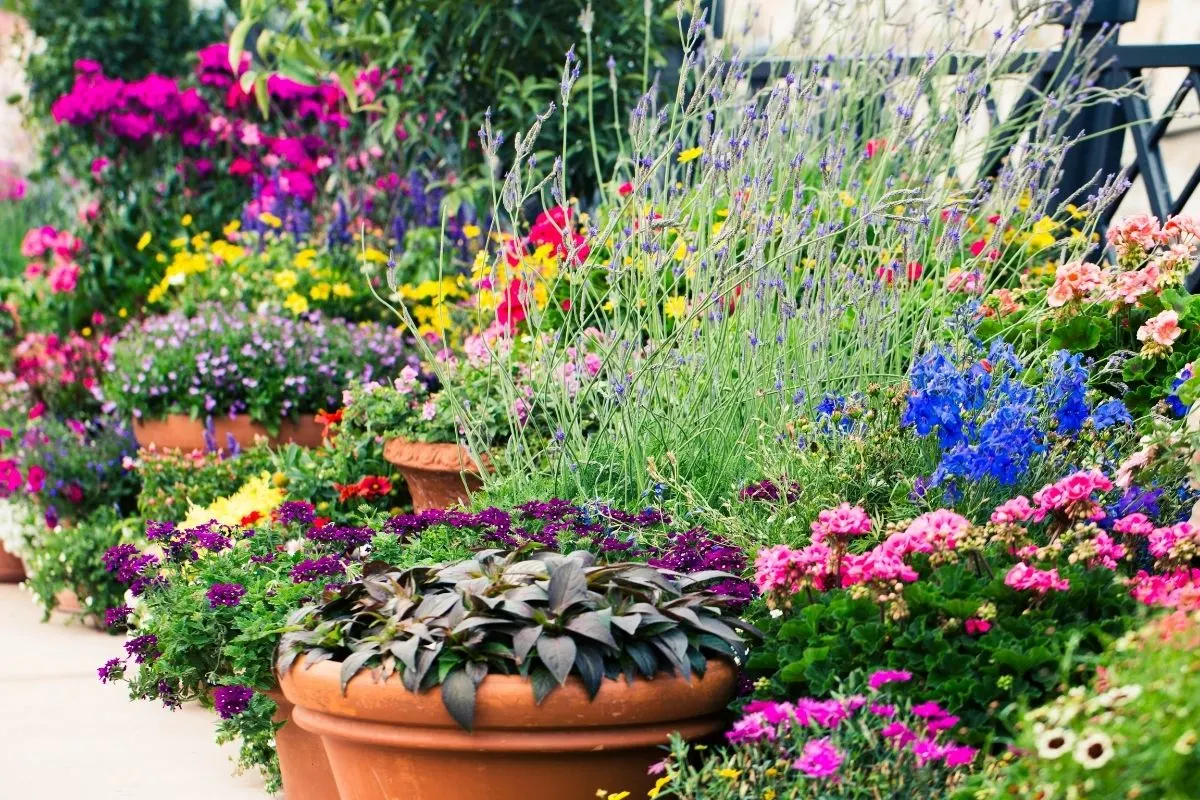
Companion plants for azaleas
Azaleas bring springtime beauty to your garden. Plant them with acid-loving plants such as snowdrops, daffodils, tulips, and coral bells for lots of color combinations that are pleasing to the eye.
Companion plants for coral bells
These beautiful perennial plants produce lovely bell-shaped petite flowers and have gorgeous foliage. Here are our favorite companion plants for coral bells.
Companion plants for daffodils
Daffodils are one of the first flowers to grace our gardens in the spring. But once their bloom time is over, they can look a bit ugly. Plant these companions around them to cover up the decaying leaves and continue the beautiful blooms throughout the year.
Companion plants for dahlias
Dahlias come in a variety of shapes, colors, and growth habits, and look great in any garden! Find out what is best planted next to these beauties.
Companion plants for daylilies
With their bright colors, daylilies can create an outstanding focal point, perfect for any garden. At the link above, I share 21 beautiful companion plants for daylilies you’ll love seeing in your landscape!
Companion plants for dianthus
With their many shapes and colors, and especially the delightful scent, dianthus flowers are a welcome addition to any garden. Plant a few and see for yourself.
Companion plants for echinacea
Echinacea, or purple coneflower, is both a beautiful native wildflower and a medicinal herb. Grow it with complementary plants for a stunning wildflower garden, or even interplant it with vegetables.
Companion plants for foxglove
The showy flowering spikes of foxglove make it a classic cottage garden plant. Check out these tips for pairing this beautiful but toxic biennial with other plants in any garden.
Companion plants for fuchsia
The exotic red flowers of fuchsia make a stunning addition to any garden. Find out which other shade-tolerant plants grow well with fuchsia and may even help encourage healthy growth.
Companion plants for gardenias
Gardenias adorn the garden with glossy foliage, elegant flowers, and a pleasant fragrance. Help your lovely gardenias thrive by growing some of their companions nearby.
Companion plants for geraniums
Geraniums make great companion plants for many ornamental and edible plants. Since they come in so many colors, you’ll always be able to find you are sure to find a geranium that fits your landscape theme.
Companion plants for hibiscus
Choosing the best companion plants for hibiscus will help it thrive in your garden. Here are 11 of the best hibiscus companions to beautify your yard.
Companion plants for hostas
Hosta leaves come in so many colors and designs! Here are 9 hosta companions that will be perfect for the shade garden.
Companion plants for hydrangeas
Hydrangeas are definitely show-stoppers, and knowing which plants to pair them with is a must, so you don’t diminish their appeal. See which plants enhance the hydrangea’s looks and which plants you should never plant with hydrangeas.
Companion plants for iris
The beautiful iris flowers, bursting with vibrant, as well as pastel colors, make great companions for your summer garden flowers. Here are just a few to try: columbine, salvia, peonies, lupines, allium, daylilies, and oriental poppies.
Companion plants for petunias
Bright, colorful, and beautiful petunias are a great garden addition. They are easy-going and get along with many other plants.
Companion plants for roses
The classic rose is beautiful but, unfortunately, rather fussy. Check out this list of flowers to plant with roses to complement their beauty and encourage healthy growth.
Companion plants for sunflowers
Unlock the secrets of stunning sunflower companions: from veggie companions to herbs and vibrant-looking flowers, see what you will plant with your sunflowers.
Grass and tree companion planting
Companion plants for arbovitae
Arborvitae make excellent privacy screens, borders, and even container plants. Plant with shrubs, flowers, and low-growing ground covers to add color to your yard.
Companion plants for ornamental grasses
In many gardens, ornamental grasses serve as a visual anchor or a privacy screen. Tuck a few in between bright flowers to add softness to the landscape.
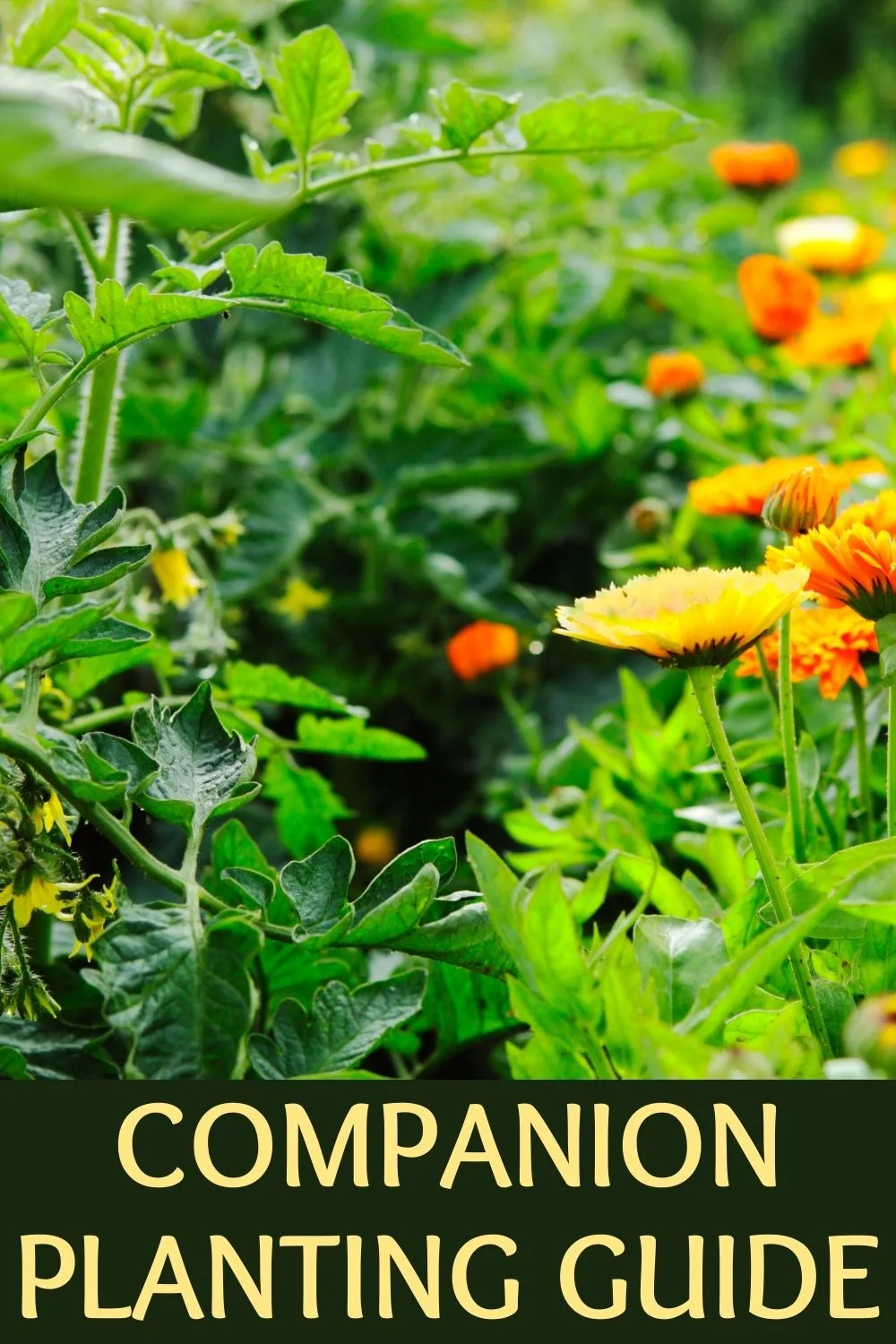


15 Best Companion Plants For Beans (And 4 To Avoid)
Saturday 15th of July 2023
[…] planting, also called polyculture or intercropping, is the practice of growing different plants in the same space based on their […]
The Most Fragrant Roses To Plant In Your Garden
Monday 15th of May 2023
[…] using organic fertilizers or companion plants to enhance their health (here are the best companion plants for […]
8 Best Companion Plants For Squash (And 4 To Avoid)
Sunday 23rd of April 2023
[…] to give the squash enough room to grow. In some cases, this will be less of an issue, as some companion plants will be harvested before the squash plants get very […]
5 Types Of Bonsai Display Tables To Show Off Your Beautiful Tree
Tuesday 3rd of January 2023
[…] Companion plants can be placed sideways in order to better highlight the bonsai […]
How To Grow Borage - A Delightful Herb For Your Garden
Wednesday 28th of December 2022
[…] Companion planting is another way to keep your borage healthier and help it work for the rest of your garden. If you want some companion plants for your borage, consider: […]